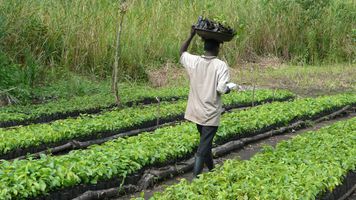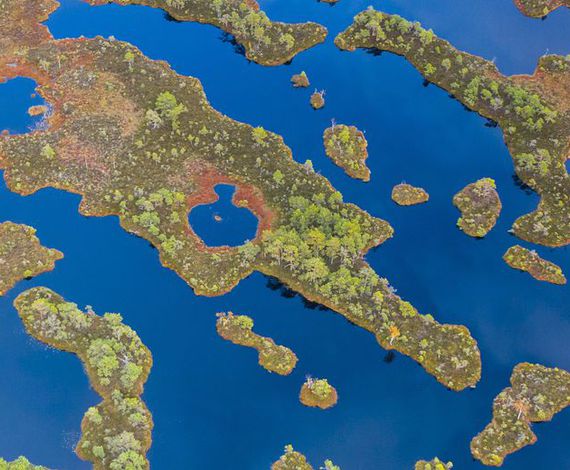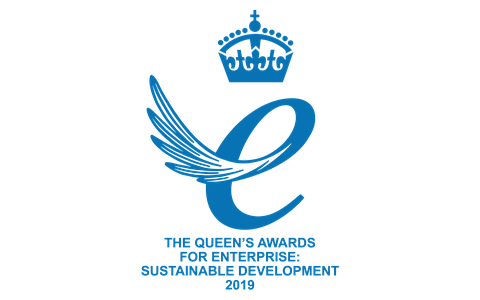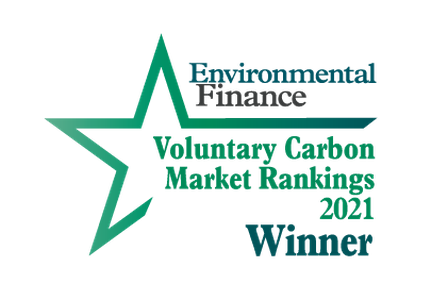Have we underestimated the rate of change and the complexity of our world in shaping our climate response? As new and completely unpredictable variables enter the equation in the midst of COVID-19, Jonathan Shopley reflects on what experience can teach us to get ahead of the curve and radically accelerate climate action.
There was a time in my late school years when I fell surprisingly and deeply in love with the magic of mathematics. As is often the case, the spell was cast by an inspiring teacher—Tickey de Jager at Rondebosch High School, Cape Town. He was also our rugby coach, and until I walked into his class for the first time, sport was fun and math was a grind. Then he used the penalty kick to explain tangents in trigonometry.
You could see it in action when South Africa won the rugby world cup last year in Yokohama, Japan. Every time Handré Pollard kicked for posts in the final against England, he’d eye-up the distance to the posts, raise his eyes to get the height of the crossbar, assess the angle of the tangent—and boom!, six conversions and two tries later the Springboks left the field triumphant.
Back at school, we protested that tangents were all good and well, but what about gravity, wind and rain, wonky kicks—real world conditions? “That” Tickey de Jager said “is where calculus, human experience and intelligence take over. Every good kicker draws on accumulated experience and aims high above the crossbar and into the wind to account for independent variables”.
So much of our climate response fails to consider the independent variables that materially shape the trajectory to that all-important inflection point.
With that advice echoing down the decades, I sense we may be making a rookie mistake by focusing our climate efforts narrowly on net zero. That is like aiming for the crossbar in the face of real-world conditions. Net zero is not our end point—it’s the inflection point at which an abundance of affordable solutions replaces risk with opportunity.
In the classroom, calculus followed trigonometry, and that’s when the love affair got serious. Differential equations replaced trigonometry’s straight lines and angles with curves that expressed the rate at which things change under the influence of multi-layered variables. Integrals looked at the aggregated consequences of those changes over time.
So much of our climate response fails to consider the independent variables that materially shape the trajectory to that all-important inflection point. For example, at launch the EU’s Emission Trading Scheme assumed GHG emissions would rise as a result of economic growth. The financial crisis of 2008 blew a hole through those assumptions and it has taken some years to fix the design error with a mechanism that dynamically adjusts to changing economic conditions.
We are getting better at acting on accumulated experience. Back in the 2000s, the climate and sustainability community sought to prompt oil and gas company shareholders to take climate action by invoking the concept of peak oil. This was the idea that fossil fuels would become unaffordable as we approached the limits of commercially viable reserves and renewables would outcompete oil and gas. The research organization Carbon Tracker brought the correct application of calculus to bear. It replaced the flawed peak oil concept with a carbon budget for GHG emissions and explained to investors that we are running out of atmospheric capacity to absorb GHG emissions, not fossil fuels. Cumulative impacts rather than the rate of change in market prices are driving transformation across the oil and gas sector now.
What we haven’t really got to grips with is how to anticipate and respond to change driven by unrecognized independent variables—those wicked ‘unknown unknowns’. I left South Africa in 1982 because I couldn’t see how the country could or would make the transformation from apartheid to a free democracy. Eight years later Nelson Mandela walked out of jail, and four years later became one of the world’s most respected national leaders. Small changes in attitudes, behavior and beliefs within and outside of South Africa went viral and the accumulated impact drove change so rapid it made your head spin. Fast forward 30 years, and despite being world rugby champions, South Africa’s sovereign credit is junk rated.
Bringing this back to climate suggests a couple of equations we need to solve to get ahead of the curve:
- How can we bank great leadership to secure continuous improvements to our approach to climate change in a VUCA (volatile, uncertain, complex and ambiguous) world?
- How do we set climate targets that encourage an abundance of solutions as we seek to repair and build resilience across the global economy and our natural ecosystems?
Over the coming weeks, we will explore the calculus of climate change in a viral world by deep-diving into these questions.
Dernières actualités

New test article 2023
A dummy article to test title issue.
Pour en savoir plus
FR Test News Article
Article test en français
Pour en savoir plus
Natural Capital Partners and ClimateCare become Climate Impact Partners
Natural Capital Partners and ClimateCare become Climate Impact Partners and sets goal of delivering 1 billion tonnes of emission reductions by 2030.
Pour en savoir plusLes toutes dernières Insights de
Climate Impact Partners

10 idées reçues à abandonner sur la compensation carbone
10 idées reçues à abandonner sur le net zéro et la compensation carbone.
Pour en savoir plus
FR Test insight article
Testing all plug-ins in 2 column format for French
Pour en savoir plus
FR - Innovation test insight article
As carbon markets grow and innovate how can Web 3.0 be harnessed in a positive way to build scale and impact?
Pour en savoir plus










